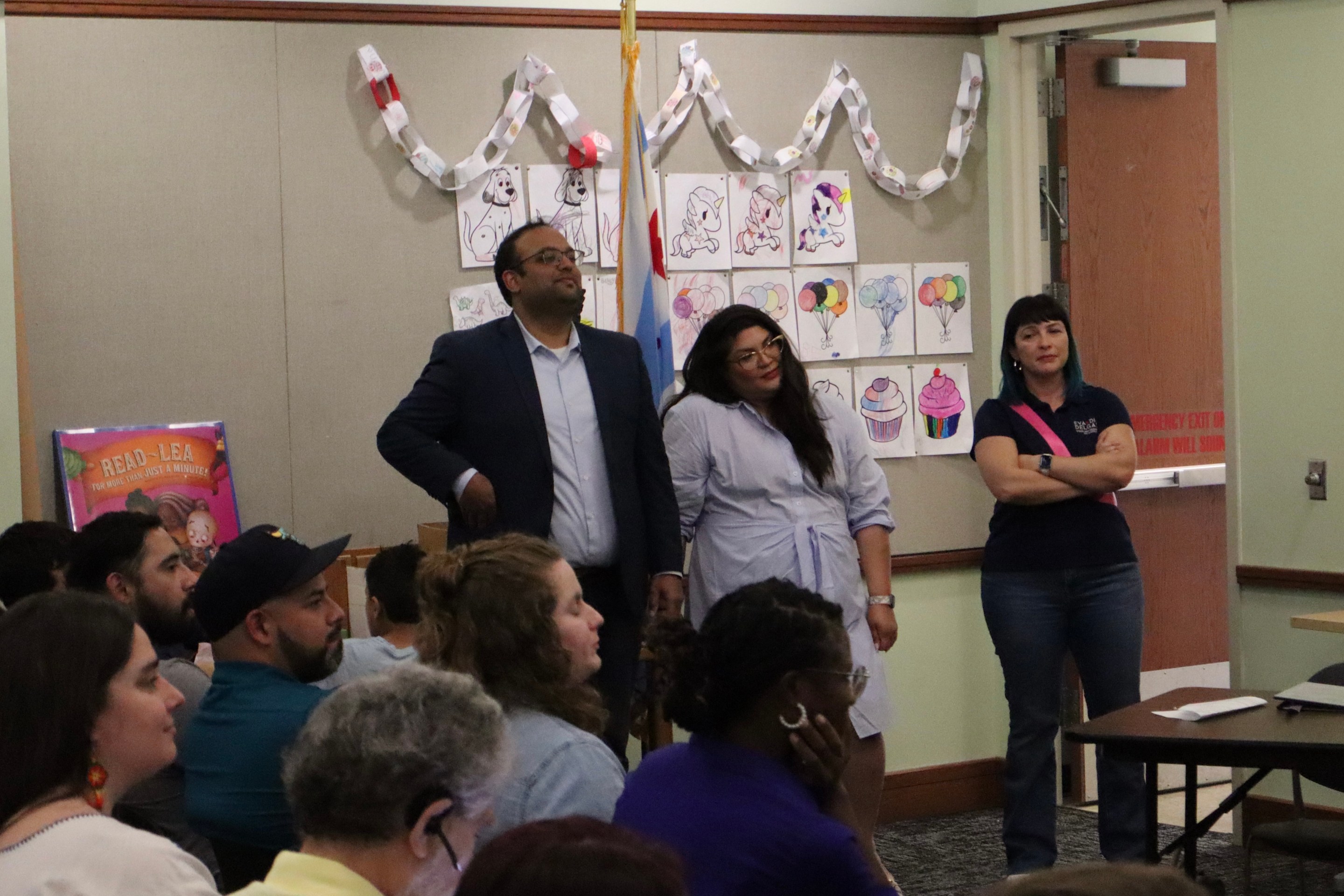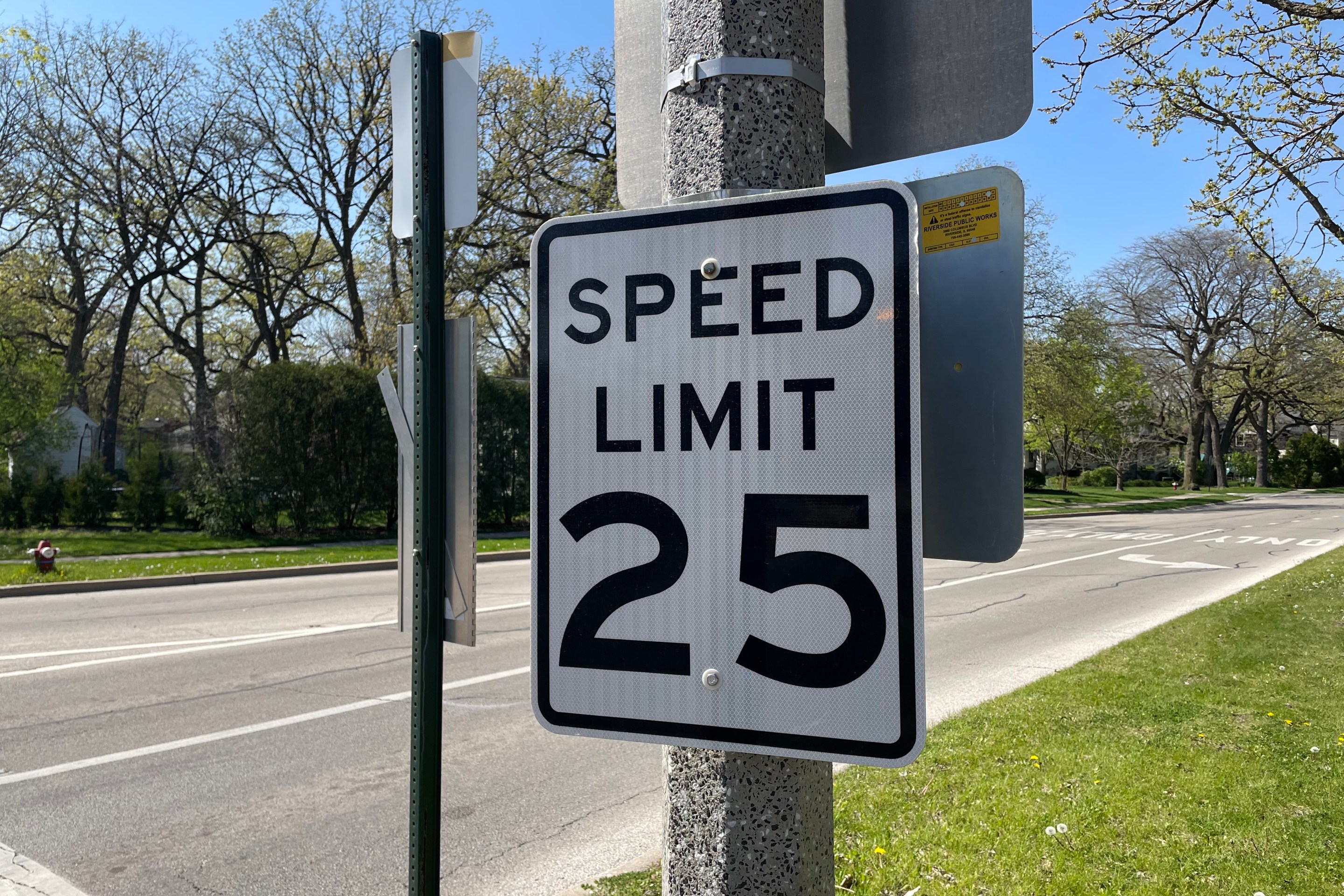CMAP survey: Residents place a high value on ability to get places, access to amenities.
1:27 PM CDT on October 21, 2021
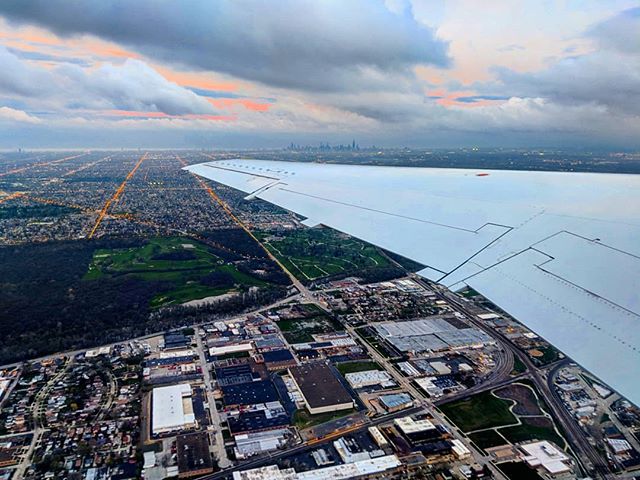
Photo: Eric Allix Rogers
I moved to Chicago to live a car-free lifestyle and to experience the opportunities a big city can offer. I was hopeful about meeting a wide variety of people and enjoying a plethora of entertainment and cultural experiences my hometown of Little Rock, Arkansas couldn’t offer.
As a lover of surveys and an urbanist, I was excited to check out the results of a survey commissioned by the Chicago Metropolitan Agency for Planning asking northeastern Illinois residents about their quality of life related to where they live. The survey gauged close to 2,500 northeastern Illinois residents’ attitudes toward key quality of life factors, such as transportation, open space, and housing, and what they considered successes and challenges across the region. Residents were also asked how COVID-19 has affected their transportation use and finances. I will focus on the transportation results of the survey.
Overall, residents place a high value on access to open space, ability to get places, and access to amenities.Respondents expressed concerns about congestion, the quality of infrastructure, the economy, and housing. A majority of those surveyed think the Chicago metropolitan region is on the wrong track. CMAP points to recommendations in ON TO 2050, the region’s long-range plan, as a way to address residents’ concerns.
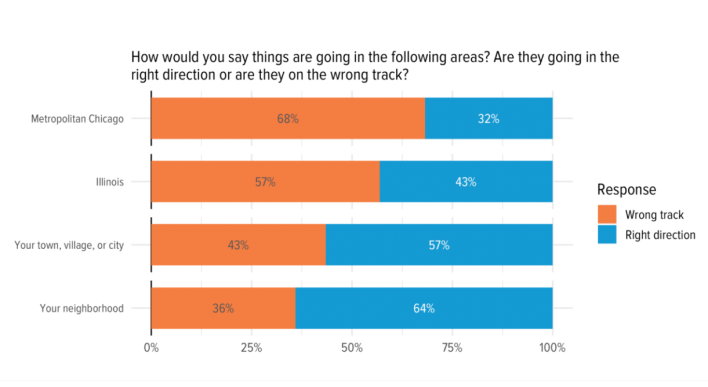
To start, a majority of Northeastern Illinois residents are satisfied with their quality of life. 65 percent of respondents are satisfied, with 34 percent staying they’re very satisfied. When asked about specific aspects, Residents are most satisfied with their ability to get to the places they want to go to on a regular basis (74 percent), their access to open space (70 percent), and air and water quality (68 percent). Residents are less satisfied with the value of services provided by their local government (47 percent satisfied and 36 percent dissatisfied) and with their access to housing they can afford (52 percent satisfied and 33 percent dissatisfied).
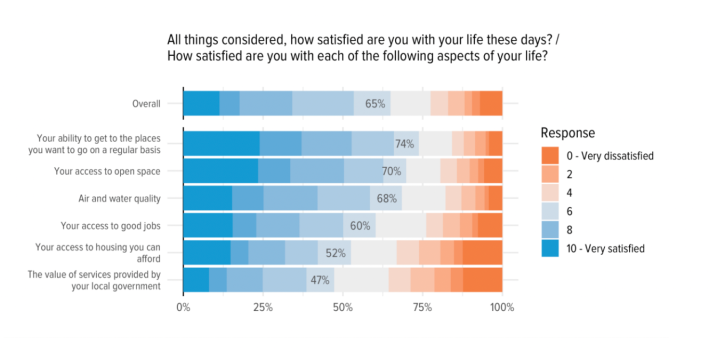
Eight out of ten residents say it’s easy for them to travel to destinations like grocery stores, parks and open space, and shops and restaurants. A somewhat smaller proportion report that it’s easy to travel to arts, culture, and entertainment (53 percent easy, 20 percent hard), or their place of work (69 percent easy, 14 percent easy). Nearby access to shops and restaurants is fairly important to perceived quality of life. When asked about the ideal street to live on, the second most common factor that respondents said would be important to perceived quality of life is nearby shops and restaurants (31 percent), without large differences in preference between different parts of the region.
Residents living in communities identified as “very high need” by CMAP are less satisfied with their access to good jobs, open space, and air and water quality. People of color are twice as likely as white residents to say it’s hard for them to get to their place of work.
Chicago or Cook County residents are slightly more likely than others to say they have had difficulty accessing various destinations. In Cook County 16 percent of currently-employed residents said it is hard to travel to their place of work, while just 11 percent of those in other counties said so. A moderately higher proportion of Chicago residents say it’s hard to travel for groceries (12 percent hard in Chicago, 4 percent hard outside Chicago) or shops and restaurants (13 percent hard in Chicago, 5 percent hard outside Chicago).
When it comes to residents' support for greater transportation investments, 90 percent of residents said it's very important or somewhat important that investments in roads, bridges, and transit go toward communities with the greatest needs. Majorities of both those outside and inside Cook County, white residents and residents of color, and each major income bracket say that this is very important. In high need communities, this sentiment was more strongly felt.
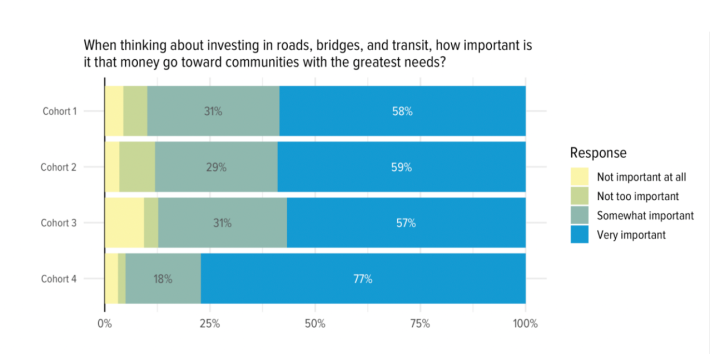
Respondents were asked about their transportation modes for regular travel prior to COVID-19 restrictions. Unsurprisingly, public transit use was concentrated in Chicago, with half of Chicago residents taking some form of transit multiple times a week while just thirteen percent of those outside Cook County reported the same. Similarly, a third of Chicago residents say they use ride-hail multiple times per week, while just 12 percent of those outside Cook County said the same. Correspondingly, driving or riding in a car multiple times a week was lower among Chicago residents (67 percent) compared to the rest of Cook County (82 percent) or in other counties (88 percent).
Residents perceive a disconnect between more urban and more rule parts of the region. Forty-eight percent of those outside Cook County say it’s hard for them to travel to the city of Chicago, while 31 percent of those inside Chicago say it’s hard for them to travel to destinations in the suburbs.
Looking forward to the post-COVID-19 era, the survey results suggest there will be a change in travel patterns. Twenty-seven percent of residents say they expect to drive or ride in a car more frequently post-COVID-19; 64 percent say they expect to drive or ride about the same amount as before. CMAP found this pairs with the fact that over a quarter of residents say they expect to use public transportation less frequently than before restrictions, including 22% of people who said they took transit multiple times a week pre-pandemic. These findings could add to residents’ concerns about traffic congestion.
A little over a third of respondents said that they expect to walk, run, or bike more often than before COVID-19 restrictions. 21 percent say they expect to ride a bicycle more than before though it's somewhat offset by 17 percent who said they expect to ride a bike less than before. A majority of respondents support the continuation of enhanced neighborhood streets to support walking and biking and dedicated areas for curbside pick up for food and shopping when things return to normal. More are unsure about street or parking spaces used for outdoor dining or events (48 percent feel it should continue, while 35 percent said it should not), with residents of Chicago, Cook County, and Lake County slightly more inclined to believe they should continue.
After being informed that “there is limited funding and land to build more roads and bridges,” 71 percent of residents say that investing in public transit is the most effective way to address regional congestion out of the choices offered. There’s broad agreement that investing in transit is more effective for addressing traffic congestion than raising fees/taxes to affect demand. There were lower levels of belief that demand-side approaches like charging higher tolls during busy times (14 percent), adding tolls to existing highways (9 percent), and increasing the gas tax and adjusting it for inflation (6 percent) are the most effective out of the listed options.
The long-range regional plan for northeastern Illinois, ON TO 2050, provides a path forward that is in alignment with respondents. Some of the many mobility goals include increasing the share of commuters who travel to work by a mode other than driving alone; doubling transit ridership through making transit more competitive; improving travel safety; leveraging the transportation networks to promote inclusive growth; and improving the resilience of the transportation network to weather events and climate change.
You can read the full report on the survey’s results through CMAP’s website.
Stay in touch
Sign up for our free newsletter
More from Streetsblog Chicago
State legislators pushing for merging CTA, Pace, and Metra into one agency spoke at Transit Town Hall
State Sen. Ram Villivalam, (D-8th) and state Rep. Eva-Dina Delgado (D-3rd), as well as Graciela Guzmán, a Democratic senate nominee, addressed the crowd of transit advocates.
Today’s Headlines for Tuesday, April 30
Equiticity and ATA: Passing a 25 mph speed limit should be combined with street redesigns that calm traffic
Equiticity, a mobility justice nonprofit, says the new speed limit shouldn't involve increased enforcement, which it says would disproportionately impact drivers of color
Johnson appoints one West Side pastor to CTA board, then nominates another West Side pastor for RTA board
Supporters argue that, despite his lack of transit expertise, Ira Acree’s social justice experience and political connections could be an asset for the RTA board.
